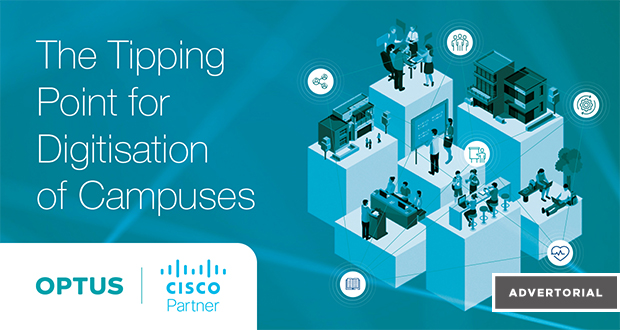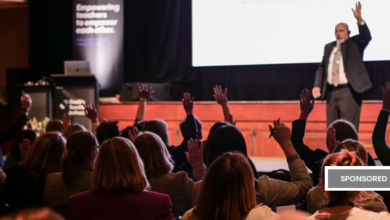The Evolution of the Physical Campus in a new Era of Hybrid Learning and Working

The transition to distance learning and remote teaching has accelerated rapidly in the education sector during the pandemic. With the closures of campuses, universities had to find virtual workarounds for students, not just to deliver curriculum content and learning materials, but also to keep students engaged and help them form and sustain peer-to-peer relationships.
The rapid digitisation of learning delivered mixed results for universities. For better prepared and technologically-progressive institutions, the experience was immersive and engaging: technology allowed universities to virtually interact with students in new ways without the constraints of a physical classroom. For example, it became easier for students to collaborate (via chat and workspaces, or on video while muted) during classes without interrupting the teacher and other students. Augmented and virtual reality allowed students to simulate experiences in environments that are either too dangerous or expensive to visit in person (e.g. a deep sea oil rig or mine site).

Technology companies also responded by fast-tracking development efforts to reflect that virtual learning and remote working were no longer fringe activities. As an example, Cisco developed technology to deliver a student experience that was not just as good as face to face, but better. Recent innovations from Cisco Webex, which will make the classroom and work from home experience even better, include:
- Automated cancelling of background noise on video calls (is it the end of barking dogs and screaming children during team meetings?)
- AI-based voice capabilities that enable live transcription, including automation of meetings notes and actions
- Real-time language translation
- Advanced video layouts and audience engagement
- Smarter meeting room devices that can, for example, automatically adjust the amount of air volume and fresh air based on the number of people in a room
- Enhanced integrations with other platforms, including the ability to join Cisco Webex meetings from Microsoft Teams and vice versa.

Innovation is occurring at the infrastructure level as well. Optus developed its Liquid Infrastructure platform that aims to help enterprises and institutes respond and thrive in the face of digital transformation. Optus Liquid Infrastructure is a Software Defined Network (SDN) automation platform that enables businesses to visualise, manage and change their network services on demand – a heightened requirement during the 2020 pandemic as institutions moved to mass instance of remote working and teaching. It enables institutions to move from a static, labour-intensive network, to a network that intelligently flows and adapts to meet growing digital demands of students, academics, researchers and staff.
Many are asking what the future holds for the physical campus and whether universities’ huge real estate holdings will offer the same value once the pandemic is under control? A recent study by Cisco and Optus (the Tipping Point report) revealed that 79% of universities believed their sector would change permanently as a result of COVID-19.
University executives from different functions concluded that universities would:
- Have less people on campus (driven by work and learn from home options)
- Need to be more experiential and alive
- Have more porous boundaries to industry
- Be more automated and efficient
So, where will the blending of teaching and learning finally land? It’s clear that the speed of innovation in blended teaching and learning will continue to accelerate. Technologies such as augmented and virtual reality, Artificial Intelligence, 5G, the Internet of Things (IoT) and WiFi6 will help to make the blend between physical and virtual environments more seamless. For example, 5G networks will provide the speed and latency required to bring educational tools such as augmented and virtual reality to life. It will also allow for mass connectivity on campus environments to support a more digitally and visualised way of delivering learning.

The convergence of these technologies will help to confirm which activities are best done on campus, and which are much more suited to a digital medium. The Tipping Point report offers a window into the types of functions (and spaces) that are most likely to be performed on campus. Some disciplines, particularly those requiring specialist equipment, will continue to be anchored to the campus. But for many others, the focus will shift from formal learning to include peer-to-peer, personalized, and social learning. The campus will increasingly be the place you visit to make human connections and form relationships.
This shift will also have significant implications for the design of campuses, including more effective use of outdoor spaces. For example, 87% of universities believe there will be more demand for outdoor learning spaces as a result of COVID-19, while 89% believe there will be less demand for lecture theatres.
For universities, this blending of the physical and virtual creates complexity and has major security and cost implications. Universities that have succeeded in making the transition to true hybrid learning and working have:
- Adopted a digital-first mentality: the question is no longer how to augment the physical experience with a virtual one, but what does the student really need / want, and how do we create that option?
- Acknowledged that multiple endpoints will be used by remote learners and workers which means integration needs to be resourced to guarantee a high level of service
- Prioritised investment in the network to ensure that infrastructure is scalable, secure and software-defined. For example, institutions that have invested in SDN have been able to create far greater agility across the network to support digital initiatives, manage and mitigate risk, and build flexibility into future operations where AI and Machine Learning will become vital into delivering great student experiences.
To access the full study on the digitisation of Education Campuses you can download the report from either of the below sources
Do you have an idea for a story?Email [email protected]





